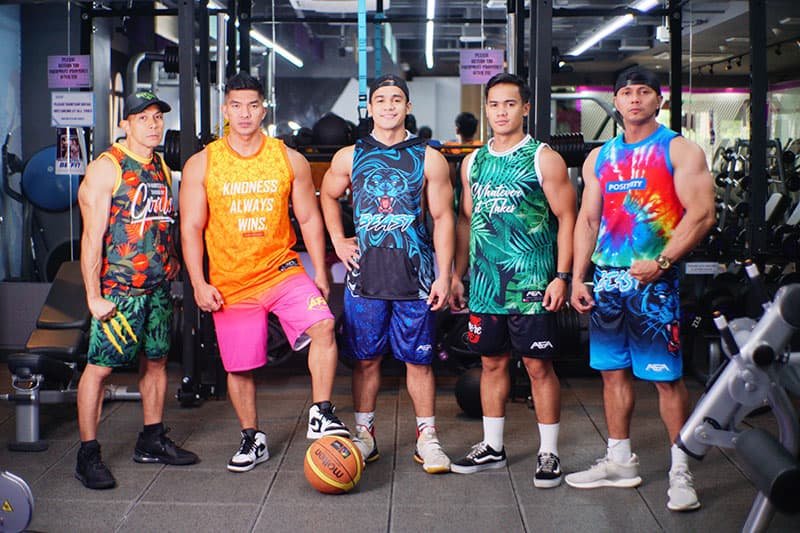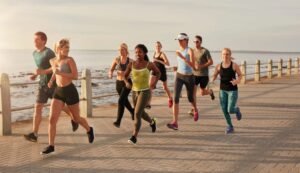Stay Ahead In Style Athletic Attire Essentials For Every Workout

Athletic attire is clothing specifically designed to be worn during physical activity or sports. Whether you’re hitting the gym, going for a run, playing a game of basketball, or practicing yoga, the right athletic wear can enhance your performance and comfort. Understanding the different types of athletic attire and how to choose the right pieces for your needs is essential for anyone leading an active lifestyle.
Understanding Athletic Attire
To make informed choices about athletic attire, it’s essential to understand its purpose, materials, and key features.
Purpose Of Athletic Attire
The primary purpose of athletic attire is to enhance performance, comfort, and safety during physical activity. Unlike everyday clothing, athletic wear is designed to accommodate movement, regulate body temperature, and manage moisture effectively.
Materials Used In Athletic Clothing
Modern athletic wear is typically made from advanced synthetic fabrics such as polyester, spandex, and nylon. These materials offer benefits such as moisture-wicking, breathability, and stretchability, making them ideal for active pursuits.
Importance Of Breathability And Moisture Wicking
Breathability and moisture-wicking properties are crucial aspects of athletic attire, especially for intense workouts or outdoor activities. Breathable fabrics allow air to circulate, preventing overheating and discomfort, while moisture-wicking fabrics draw sweat away from the skin, keeping you dry and comfortable.
Key Components Of Athletic Attire
Athletic attire consists of various clothing items and accessories tailored to different types of physical activity.
T-Shirts, Tank Tops, And Compression Shirts
Tops are an essential part of athletic attire, providing coverage and support for the upper body. T-shirts and tank tops are versatile options suitable for a wide range of activities, while compression shirts offer additional muscle support and circulation benefits.
Shorts, Leggings, And Sweatpants
Bottoms are designed to provide freedom of movement and support for the lower body. Shorts are ideal for high-intensity workouts or warm weather, while leggings offer compression and coverage for activities like running or yoga. Sweatpants are comfortable and versatile for casual exercise or leisure.
Running Shoes, Cross-Trainers, And Specialty Shoes
Footwear plays a critical role in athletic performance and injury prevention. Running shoes are designed for forward motion and impact absorption, making them ideal for activities like jogging or running. Cross-trainers offer versatility for various types of workouts, while specialty shoes cater to specific sports such as basketball, tennis, or soccer.
Socks, Headbands, And Wristbands
Accessories complement athletic attire and provide additional comfort and support. Socks with moisture-wicking properties can prevent blisters and keep feet dry during exercise. Headbands and wristbands absorb sweat and keep hair and sweat out of your eyes, enhancing comfort and focus during workouts.
Factors To Consider When Choosing Athletic Attire
When selecting athletic attire, several factors should be taken into account to ensure optimal performance and comfort.
Fit And Comfort
The fit of athletic wear is crucial for comfort and performance. Clothing should be snug enough to provide support and mobility without being too tight or restrictive. Look for garments with stretchable fabrics and ergonomic designs that move with your body.
Fabric Technology
The choice of fabric can significantly impact the performance of athletic attire. Moisture-wicking fabrics such as polyester and nylon are ideal for managing sweat and moisture during workouts. Additionally, breathable materials promote airflow and ventilation, keeping you cool and comfortable during intense exercise.
Activity-Specific Gear
Consider the type of physical activity you’ll be engaging in when choosing athletic attire. Different sports and exercises may require specific features or designs to enhance performance and safety. For example, running shorts with built-in briefs provide support and coverage for jogging, while moisture-wicking leggings offer compression and flexibility for yoga or pilates.
Climate And Weather Considerations
The climate and weather conditions can influence your choice of athletic attire. In hot and humid environments, lightweight and breathable fabrics are essential for staying cool and comfortable. In cold weather, layering with moisture-wicking base layers and insulated outerwear can help regulate body temperature and keep you warm during outdoor activities.
Tips For Buying Athletic Attire
When shopping for athletic wear, keep these tips in mind to ensure you make the right choices.
Trying Before Buying
It’s essential to try on athletic attire before purchasing to ensure proper fit and comfort. Pay attention to how the clothing feels during movement and whether it provides the support and flexibility you need for your activities.
Quality Over Price
Investing in high-quality athletic wear is worth it in the long run. While cheaper options may seem tempting, they may lack durability, comfort, and performance features. Look for reputable brands known for their quality and innovation in athletic apparel.
Taking Care Of Your Athletic Wear
Proper care and maintenance can extend the life of your athletic attire and preserve its performance features. Follow care instructions on garment labels, such as washing in cold water, avoiding fabric softeners, and air-drying instead of using a dryer. This will help maintain the fabric’s elasticity, moisture-wicking properties, and overall quality over time.
Fashion And Trends In Athletic Attire
Athletic wear has evolved beyond mere functionality to become a fashion statement in its own right.
Evolution Of Athletic Fashion
In recent years, athletic wear has transcended its traditional role and become a prominent fashion trend known as “athleisure.” This trend emphasizes comfort, style, and versatility, blurring the lines between activewear and casualwear. Athleisure-inspired outfits can be seen everywhere, from the gym to the streets, and even in high-fashion runways.
Influential Brands And Designers
Several brands and designers have made significant contributions to the evolution of athletic fashion. From established sportswear giants like Nike, Adidas, and Under Armour to luxury labels like Lululemon and Outdoor Voices, there is a wide range of options available to suit every taste and budget.
Current Trends In Athletic Wear
Contemporary athletic wear trends focus on innovative designs, bold colors, and sustainable materials. Performance features such as moisture-wicking, compression, and breathability remain essential, but with added emphasis on style and aesthetics. Popular trends include seamless activewear, recycled materials, and inclusive sizing options to cater to diverse body types and preferences.
Conclusion:
Athletic attire plays a crucial role in enhancing performance, comfort, and style during physical activity and sports. By understanding the purpose of athletic wear, considering factors such as fit, fabric technology, and activity-specific gear, and staying updated on fashion trends, you can make informed choices that support your active lifestyle. Remember to prioritize quality, comfort, and functionality when selecting athletic attire, and don’t be afraid to experiment with different styles to find what works best for you.








